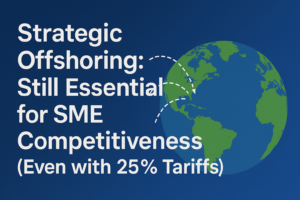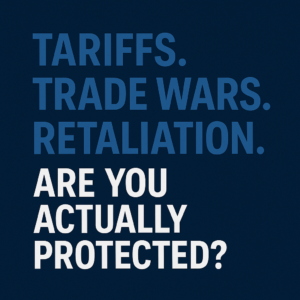
Introduction
As global supply chains continue to evolve, manufacturers of metal components—such as brackets, enclosures, and simple CNC-machined parts—must weigh the advantages of in-house production against outsourcing to specialized contract manufacturers in cost-effective regions. While North America has long been a hub for high-quality manufacturing, the rising costs of labor, infrastructure, and regulatory compliance are making offshore manufacturing in India and Vietnam an increasingly attractive option.
This article explores the cost factors, technological advancements, and real-world case studies that highlight why outsourcing to India and Vietnam is a smart strategic move for companies in the automotive and industrial equipment sectors.
The Hidden Costs of In-House Manufacturing
Labor Costs: A Competitive Disadvantage
Labor costs in North America have been steadily increasing due to labor shortages and high wage demands. In contrast, India and Vietnam offer a significantly lower-cost workforce while maintaining high-quality production standards.
- Average Manufacturing Labor Costs (per hour, including benefits):
- Vietnam: $3–$5
- India: $4–$7
- U.S./Canada: $25–$35
Even when accounting for productivity differences, the cost gap remains substantial. For high-volume production runs exceeding $500,000 annually per part, these savings translate into millions in cost reductions.
Overhead Expenses: The Unseen Burden
Beyond direct labor, manufacturers must consider overhead expenses, including utilities, facility maintenance, and administrative costs. In-house operations require constant investment in:
- Facility maintenance – Repairs, upgrades, and ongoing depreciation costs.
- Capital expenditures – Upfront investments in CNC machinery, automation, and production lines.
- Regulatory compliance – Costs associated with OSHA, environmental regulations, and union negotiations.
By contrast, offshore manufacturers assume these responsibilities, significantly reducing overhead for companies that outsource.
Compliance Costs: The Regulatory Challenge
North American manufacturers face high compliance costs due to stringent regulations on safety, environmental impact, and labor laws.
- Workplace Safety Standards – Compliance with OSHA regulations increases operational costs.
- Environmental Regulations – Costs for emissions control, waste management, and energy efficiency requirements.
- Unionization Risks – Labor strikes and negotiations can disrupt production and drive costs higher.
By outsourcing to ISO 9001-certified manufacturers in India and Vietnam, companies can achieve regulatory compliance without incurring excessive costs.
The Rise of India & Vietnam as Advanced Manufacturing Hubs
Modern Facilities & Industry 4.0 Adoption
While some North American factories struggle with aging infrastructure, India and Vietnam are rapidly modernizing with state-of-the-art production facilities.
- CNC Machining & AI Integration: Indian manufacturers leverage AI-driven quality control and robotic automation for precision manufacturing.
- Smart Factories: Vietnamese manufacturers are integrating IoT and robotics to enhance efficiency and reduce waste.
- Government-Backed Industrial Zones: India and Vietnam offer tax incentives and infrastructure investments that attract multinational corporations.
Example: Samsung recently announced a $1.8 billion investment in a Vietnamese OLED display factory, further demonstrating the country’s ability to support high-tech manufacturing.
Skilled Workforce & Manufacturing Expertise
India and Vietnam have developed extensive technical training programs to supply skilled labor for high-precision manufacturing. Unlike North America, where a shortage of skilled machinists is a growing concern, these countries have an abundant talent pool ready to meet the needs of international companies.
Supply Chain Reliability & Scalability
With major ports, export processing zones, and an established network of suppliers, India and Vietnam provide strong logistical advantages for global manufacturers. Their ability to handle high-volume production makes them ideal partners for contract manufacturing.
Recent Onshoring Failures Highlight Offshoring Benefits
Despite efforts to bring manufacturing back to North America, many onshoring initiatives have failed due to economic realities.
Case Studies of Onshoring Failures:
- Intel’s Struggles with U.S. Chip Manufacturing: Faced with high costs and supply chain inefficiencies, Intel has reconsidered its U.S. expansion plans in favor of Asian facilities.
- Ford’s Cost Overruns in Michigan: Rising labor costs forced Ford to shift production of metal brackets and enclosures back to India to remain competitive.
- Boeing’s Domestic Production Delays: The company’s attempt to expand in-house production faced labor shortages and aging infrastructure, leading to reliance on offshore suppliers.
These cases demonstrate that while reshoring is often politically popular, the economic challenges make it difficult to justify.
Real-World Success Stories of Outsourcing
Automotive Components – India
A U.S.-based Tier 1 automotive supplier outsourced its metal brackets and enclosures to an Indian contract manufacturer. The results:
- Cost Reduction: 42% decrease in production costs.
- Faster Lead Times: 28% reduction in cycle time due to CNC automation.
- Improved Consistency: Defect rates dropped below 0.2%.
Industrial Equipment – Vietnam
A Canadian industrial equipment manufacturer shifted its CNC-machined enclosures to a Vietnamese partner. The benefits included:
- 40% labor cost savings
- Elimination of machine maintenance expenses
- Scalability for high-volume production
Conclusion: Why Outsourcing is the Future of Metal Fabrication
Given the high costs associated with in-house manufacturing, the advantages of outsourcing metal fabrication to India and Vietnam are clear:
- Significantly lower labour and overhead costs
- Access to cutting-edge manufacturing technologies
- Regulatory compliance without excessive costs
- Greater scalability and flexibility for high-volume production
By leveraging the capabilities of specialized offshore manufacturers, companies can enhance profitability, improve operational efficiency, and remain competitive in a rapidly evolving global marketplace.
Sources & Further Reading:
- “India & Vietnam: The New Manufacturing Source” – Zetwerk
- “Samsung’s $1.8B Investment in Vietnam” – Reuters
- “Challenges of Reshoring: The Reality Check” – Financial Times
- “Global Manufacturing Trends: Why Vietnam is Winning” – Nikkei Asia
- “Boeing’s Manufacturing Setbacks: The Case for Offshoring” – Bloomberg
- “Vietnam’s Smart Factories: A Competitive Edge” – World Bank
- “Why Intel is Rethinking U.S. Chip Manufacturing” – Economic Times
#outsourcing #manufacturing #CNCmachining #metalworking #contractmanufacturing #IndiaManufacturing #VietnamManufacturing #industrial #automotive #supplychain #costreduction #reshoring #offshoring #smartfactories #industry40 #automation #ISO9001 #supplychainmanagement #globaltrade #manufacturingstrategy #metalfabrication #advancedmanufacturing #costsavings #businessgrowth #metalcomponents #engineering #logistics #efficiency #manufacturingtech #economicgrowth
#QualityControl #VietnamManufacturing #Manufacturing2024 #OffshoreManufacturing #REDUxEngineering #QualityAssurance #ManufacturingTips #TechInManufacturing #AuditProcess #InspectionProcess






